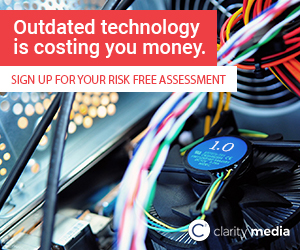2017 ANA Financial Management Conference Guide – Day 2– Advertiser/Agency Relationships, Media & Technology

2017 ANA Financial Management Conference Guide – Day 2– Advertiser/Agency Relationships, Media & Technology
In Day 2 we dive further into the meat of the conference with sections covering new agency advertiser payment models, media and new technology.
The 3 Sections we’re paying attention to for Day 2:
DON’T GET ME STARTED
Jeff Goodby, co-founder of Goodby Silverstein & Partners and One Club Hall of Fame member, will reflect on the thorny business of valuing creative work. Can the billing of creative be data- or performance-driven? How do we build compensation plans that still encourage unexpected thinking? Is it worth even trying? Predictably, the answer is “yes” and Mr. Goodby will present cases to make this clear.
Initial Thoughts
We’re interested in the concepts and topics that Mr. Goodby will be speaking on. There are several core questions here as to how creative work can be valued. One question we debate internally is to what extent can agencies survive in a system where they are only paid on creative that leads to a successful campaign? What is the cost of a good campaign vs. a bad campaign? How do you make these costs predictable when creative cannot always be? We want to hear.
MEDIA KEYNOTE
Media has become a topic of great interest at the ANA Advertising Financial Management Conference as it represents the biggest marketing spend item for many companies. Lou Paskalis oversees Bank of America’s substantial media investment across traditional, digital, and social media channels. He leads the media analytics practice and is the co-executive sponsor of the bank’s newly formed Content Center of Excellence. Given his role, Lou has expertise on urgent media-related topics and issues facing marketers, including programmatic buying, data, transparency, mobile, optimizing the media mix, and the digital supply chain. Adweek recently recognized Lou as one of the “most indispensable professionals across marketing, media, advertising, and technology,” and attendees will benefit from hearing his perspective.
Initial Thoughts
An educational opportunity! We hope Mr. Paskalis dives into his views and takeaways on the issues of transparency relating to issues facing marketers, including programmatic buying, data, transparency, mobile, optimizing the media mix, and the digital supply chain. We would like to know how the Content Center of Excellence is engaging with technology solutions to aggregate all of this information and if Lou sees the digital supply chain as part of the Advertising Supply Chain and not a separate and distinct entity.
BLOCKCHAIN – A REVOLUTION FOR THE AD INDUSTRY
Blockchain will revolutionize the business world – and that includes the advertising industry. Blockchain is a decentralized digital ledger for a transaction which provides a sequential list of digital records, written and maintained by consensus and distributed across its participants. This provides a detailed audit trail as all transactions are auditable within Blockchain’s universal, immutable ledger. Blockchain technology injects a trust layer and allows stakeholders to operate from a single, unchangeable version of digital truth.
Initial Thoughts
Blockchain is a decentralized and distributed digital ledger that records transactions across many computers in such a way that the registered transactions cannot be altered retroactively. It was originally used as a core component in the online currency Bitcoin. Our question: to what extent is it a panacea for all issues associated with digital programmatic? Here are some prospective barriers to consider:
-
There are many entrenched interests in the ad market making adoption problematic and even potential push back
-
The technology is still new and unproven
-
Using digital tokens ads to complexity for many publishers unfamiliar. For example, It took Google years to move people to the DoubleClick platform from DART and it’s still called DART by many
-
It requires clear cooperation across the entire supply chain as free and open code but as always in digital there are companies charging in to monetize the process
-
It still does solve some potential fraud issues but not completely nor does it solve brand safe, positioning, view ability issues unless that is included in the purchase code?
Suffice it to say these are several key questions as to how this could be implemented. If implemented in an open, standardized and easily executable basis, with full advertiser support as a standard, this could be transformational. A BIG IF.
C2 Industry Insights/Articles (Read Up)
https://venturebeat.com/2017/04/09/the-digital-adverstising-strategy-no-ones-told-you-about-blockchain/
http://adage.com/article/digitalnext/blockchain-technology/309015/
IAB Summit Discussion on Blockchain









